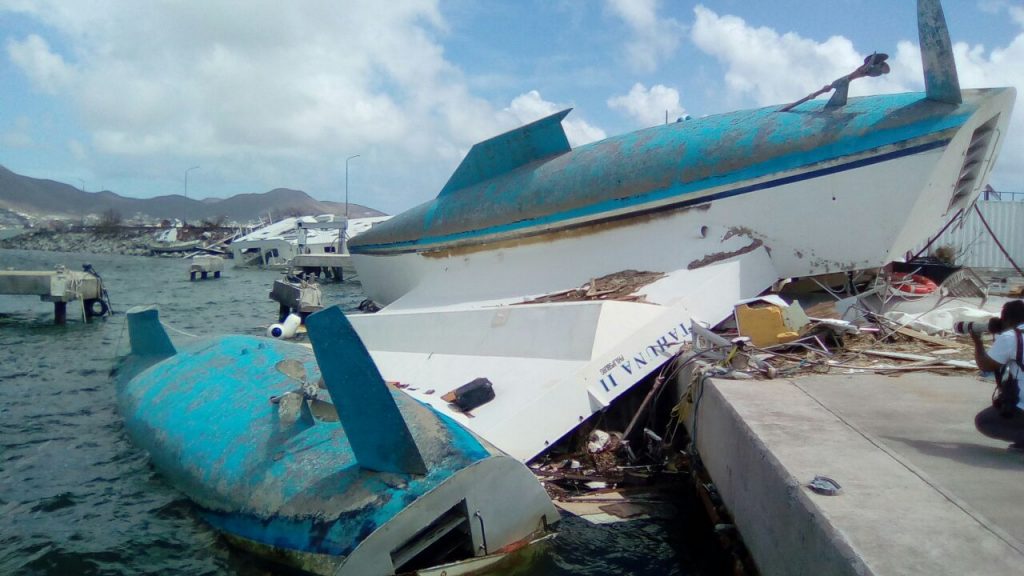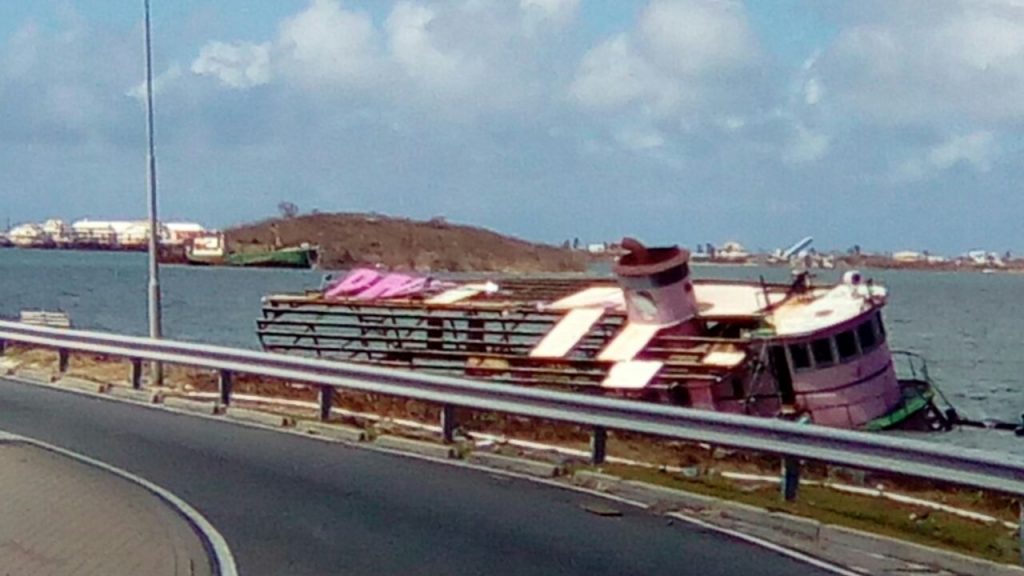Experts: Major damage if hurricane like Irma hits TT

Would Trinidad and Tobago withstand the onslaught of a Category 5 hurricane like Irma, which the Caribbean and the southern US continues to recover from? Most likely, experts tell Sunday Newsday in this special report.
If a Category 5 hurricane like Irma were to hit Trinidad and Tobago buildings in lower income areas and squatters would be the most affected, says Joint Consultative Council for the Construction Industry president Dr James Armstrong.
“If it were to happen here it might not be as devastating as 95 per cent of the buildings in Barbuda but you would be surprised to see a significant amount of destruction.”
Irma caused also catastrophic damage in Barbuda, Saint Barthélemy, Saint Martin, Anguilla and the Virgin Islands and has caused at least 82 deaths, including 43 in the Caribbean and 39 in the United States. But what if it and another similar hurricane had hit this country?
Armstrong, in response to Sunday Newsday, said a powerful hurricane would be “devastating” to this country in different ways including severe flooding. He said he was also not sure that the type of construction used for small buildings could withstand a Category 4 or 5 hurricane.
“We will have a significant amount of damage. I don’t think we are really following, particularly in lower income areas, following even small building guidelines.”
Armstrong said the country has not had the experience of a powerful hurricane for many years.
TT was hit by Tropical Storm Bret in June leading to one indirect death, downed trees, roofs blown off and flooding but no major damage. But back in 1974 Tropical Storm Alma caused $5 million in damage and two deaths while the 1933 Trinidad hurricane resulted in 13 deaths, thousands left homeless and an estimated $3 million in damages.
And there was deadly Hurricane Flora in 1963, which devastated Tobago on September 30 with winds estimated at 195 km/h. Eighteen people died in Tobago, and two drowned in Trinidad due to flooding triggered by the Category 3 storm. The island lost 50 per cent of its coconut trees and cocoa crop, as well as 75 per cent of the trees of the forestry reserve. Flora destroyed an estimated 2,750 houses in Tobago, and damaged 3,500 amounting to US$30 million in losses.
Armstrong said there is a need to tighten up the construction of buildings and homes, and this includes ensuring inspections take place. He recommended the retrofitting of a number of homes.
“I am hopeful something can be taken into consideration certainly within local government municipal bodies for the building control.”
Armstrong said to construct a home an application must be made to the Town and Country Planning Division but with local government reform it would all be done at the municipal level.
There are guidelines, he disclosed, for the construction of small buildings which most engineers follow as well as codes from Florida in the United States, and the United Kingdom. Armstrong also said there is the Caribbean Uniform Building Code or CUBiC.
(Although Irma caused major damage in Florida, there are many reports that buildings withstood her fury because of improved building codes enforced after 1992’s Category 5 Hurricane Andrew caused significant infrastructure damage to the state.)
Armstrong said despite the guidelines they are not always followed and gave the example of roofs resting on a ring beam (a horizontal support for a masonry wall) instead of being properly connected. He said in the event of a hurricane the housing stock at a lower (income) level would incur significant damage though not to the extent suffered in other countries. And “by and large” there is fairly good housing stock at the upper level, he observed.
“'God is a Trini' so we keep getting away from it.”
Armstrong attributed seasonal flooding to a lack of control. He pointed that that in the National Physical Development Plan (NPDP) of 1984 there were areas indicated as flood plains but from then to know it is “surprising” that such areas have had significant development.
He also said with the level of squatting and squatter regularization the country was “really asking for trouble” when it comes to hurricanes.
On the National Building Code, for which a committee had been set up, Armstrong said as far as he is aware work is still being done on it but “we need to move on that as quickly as possible.”
“We do need a building code. We really need to get these things done and once we have it in place we need to enforce it…at the design level when we submit designs and (have it) scrutinized carefully (to ensure) that details in architectural drawings would withstand different disasters. We also have earthquakes to think about. That is another problem as well.”
Coastal lands vulnerable to storms
President of the Trinidad and Tobago Society of Planners Victoria Hobday also commented on this country’s vulnerability to hurricanes and pointed out that a large percentage of the population and settlement is in coastal areas and a lot of Port of Spain and San Fernando is on reclaimed land.
She said there is also a significant issue with informal settlements or squatters who “build whatever they can, wherever they can.” Additionally, she said, there is a tremendous amount of unauthorized and unregulated development and without regards to things like water courses and drainage.
“We see it every time it rains. Walls get eroded, there is damage to property.”
She said within squatter communities some people would improve their homes over time by reinforcing them and building with concrete.
“But for a lot of them the quality are very substandard. Plywood walls, galvanise roofing. Very unstable structures.”
She said there is also the wider global situation of climactic change and sea level rise, and spoke of local coastal erosion in the south west peninsula and pictures in Icacos of coconut trees falling into sea in areas that was once beach.
Hobday said while TT has been quite fortunate, given that it generally too far south to be affected by hurricanes, the threat and scare of Tropical Storm Bret was “quite possibly a shade of things to come.”
She said the country could be increasingly vulnerable to the global climactic system which was “all over the place” and Hurricane Irma, for example, was “massive compared to what seen before.”
“Given these elements, if something big did happen we’re in for some trouble.”
She said with hurricanes, tropical storms or cyclones there are fast and devastating winds and given the quality of most structures citizens would be extremely vulnerable, especially those with the least economic power.

Hobday said hurricanes also bring storm surges and rough seas and would affect people in coastal areas from a wide range of economic groups including those living in Sea Lots or Westmoorings.
She said there is a substantial amount of development that proceeds without any approvals and there is “no kind of oversight whatsoever other than integrity and competence of whoever doing the design.”
The NPDP of 1984 is “quite old” and is the only statutory plan there is, she noted, though there have been various attempts to update the plan in full and in part over the years.
“To begin with we need up to date comprehensive policy for country which looks at (basically) what needs to go where. We needed it 20 years ago if not longer.”
She said once this is in place then the Town and Country Planning Division, in theory, would be in a better position to make decisions that are “rational, coherent and backed by policy” and also prevent unauthorised development in inappropriate locations.
Hobday also said proper enforcement is needed, adding there are many laws and regulations that are either not implemented or enforced.
“We need a substantial culture change in Trindad to really prepare us for something like Hurricane Irma.”
Land surveyor Ivan Laughlin said there are a range of land use issues that need to be looked at carefully and called for a series of national discussions about these matters. He pointed out it is only September and the hurricane season ends in November.
“We still have a couple months to go.”


Comments
"Experts: Major damage if hurricane like Irma hits TT"